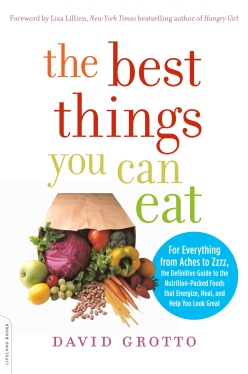We are really looking forward to our wonderful Thanksgiving feast with all the trimmings. The usual suspects will be in attendance but this year we will be taking some extra steps to avoid having the one guest that no-“body” wants over: food infection!
Did you know that millions of people are sickened, 325,000 are hospitalized and 5,000 die each year from food poisoning? Let’s add avoiding food infection this year to our list of things to be thankful for – let me show you how!
I thought I’d share some great tips from my favorite website for fighting food infection – www.homefoodsafety.org to help you have a safe and fun holiday. I also included some great Turkey Food Safety Tips from this great website, below.
The four basic steps to fighting food infection are:
Wash hands often:
- Hands should be washed in warm, soapy water before preparing foods and especially after handling raw meat, poultry and seafood. Never forget to wash your hands after switching tasks, such as handling raw meat and then cutting vegetables. Also, it is important to wash hands after taking out garbage, sneezing or petting your dog or cat.
- Sing two choruses of “Happy Birthday” while you lather — washing your hands for about 20 seconds. Always wash your hands front and back and up to your wrists, between fingers and under fingernails. Dry your hands with disposable paper towels or clean towels.
Keep raw meats and ready-to-eat foods separate:
- Use two cutting boards: one for cutting raw meat, poultry and seafood; another for ready-to-eat foods like breads, fruits and vegetables.
- Wash cutting boards thoroughly in hot, soapy water after each use.
- Discard cutting boards that are worn with cracks, crevices and excessive knife scars.
- Wash plates between uses or use separate plates: one plate for holding raw meat, poultry and seafood; another for cooked foods.
- Place raw meat, poultry and seafood on the bottom shelf of the refrigerator so juices don’t drip onto other foods.
- Place washed produce into clean storage containers, not back into the original ones.
- Use two separate clean towels/cloths: one to dry off the kitchen surfaces and another one to dry your hands.
Cook to proper temperatures:
- Use a meat/cooking thermometer to cook to a proper internal temperature of at least 165° F. Harmful bacteria are destroyed when food is cooked to proper internal temperatures. When cooking a stuffed turkey, the center of the stuffing must reach 165°F. For safety and uniform doneness of turkey, cook stuffing separately
Refrigerate promptly below 40° F
- Food should not be out of refrigeration for more than two hours because it is exposed to temperature above 40°F, where harmful bacteria multiply rapidly.
- Never allow foods to defrost at room temperature on the counter or in warm water. Most foodborne pathogens thrive at room temperature. Two safe ways to defrost food is in your refrigerator or your microwave oven. If you defrost in the refrigerator, remember to cover raw meat and place it on the bottom shelf so raw juices don’t drip onto other foods. If using the microwave oven, meat thawed by microwaving must be cooked immediately afterward.
Additional Turkey Food Safety Tips
- Pick up the turkey and other meat items last and ask to have them bagged separately from other groceries
- Thaw turkey in the refrigerator (never on the counter) or in the microwave using the defrost setting or under cold water
- For safe thawing in the refrigerator, allow about one day for every four to five pounds of turkey to thaw in the refrigerator
- When thawing turkey in the microwave, follow owner’s manual. Cook immediately after thawing because some areas may become warm and begin to cook during microwaving
- Turkey may also be thawed in cold water in its original airtight packaging or in a leak-proof bag. Submerge the bird or cut-up parts in cold water, changing the water every 30 minutes. Estimate minimum thawing time to be 30 minutes per pound for whole turkey
- Do not re-freeze thawed turkey
- Refrigerate leftover turkey promptly within two hours
Lastly, be mindful of preventing food infection throughout the day. Food infection doesn’t just happen at the Thanksgiving dinner – it could happen at breakfast!
For example, we usually start our day off with a substantial breakfast in order to minimize our chances of overeating throughout the day. And I always like to include a great protein source to start off the day, like eggs. My Daughter Chloe LOVES over-easy eggs but if you haven’t heard, an undercooked yolk can harbor salmonella bacteria.
Salmonella can reside inside (washing the eggs won’t help) any type of egg: free range, brown eggs, vegetarian-fed – it doesn’t matter – all are at risk. In fact, according to the CDC, 1 in 10,000 eggs contain Salmonella. The elderly, small children, pregnant women and persons with weakened immune systems are at increased risk for serious illness from salmonella infection
The best solution is to use pasteurized egg products like Egg Beaters® www.eggbeaters.com or an in-shell product like Davidson’s Safest Choice™ Eggs www.safeeggs.com .So if you plan on making over easy, sunny side up, Caesar salad, cookie dough…the list goes on, be sure to use pasteurized eggs! And if you want to try serving an amazing Caesar Salad reipe for Thanksgiving, try this safe and delicious recipe from Davidson’s!
Happy and safe Thanksgiving to you all!!
CAESAR SALAD
Ingredients:
2 lg. heads Romaine Lettuce
1 tsp. prepared Dijon Mustard
2 lg. heads Boston lettuce
2 Davidson’s Safest Choice™ Pasteurized Shell Eggs raw
1 lg. Clove Garlic
1/2 c. dressing (see recipe below)
Anchovy Fillets
1/2 c. Parmesan cheese, grated
Black Pepper, to taste
3/4 c. Olive Oil
1 tblsp. Worcestershire Sauce
2 Lemons
Toasted Croutons
Directions:
Let two bruised garlic cloves sit in 3/4 cup good olive oil overnight.
Add the juice of two lemons. Remove and discard the garlic. Chop 6 anchovy fillets that have been soaked for 30 minutes in milk and pat dry.
Wash and thoroughly dry lettuce. Rub a large; wooden salad bowl with a large garlic clove and discard. Mash the fillets in bowl with 1/2 tsp. freshly ground pepper, 1 tablespoon Worcestershire sauce and a generous teaspoon of Dijon mustard. Break in the Davidson’s Pasteurized Shell Eggs™, toss in the greens and add 1/2 cup grated parmesan cheese. Add olive oil mixture and top with approximately 1 cup croutons.




